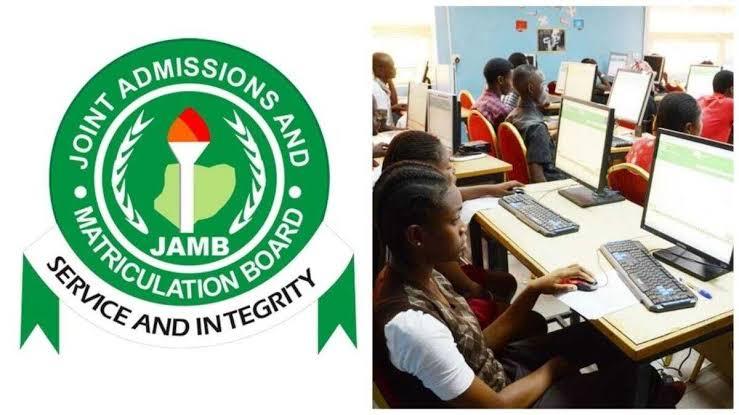Edo State, situated in Nigeria’s South-South geopolitical zone, is taking strategic steps toward economic diversification and sustainable development with its ambitious 2025 budget. Known for its cultural richness, industrious population, and vast potential, Edo State has recently demonstrated commendable fiscal responsibility, transparency, and development-oriented governance. The 2025 budget reflects this focus, aiming to consolidate past achievements while scaling up capital investments that can reposition the state economically.
Governor Monday Okpebholo signed the ₦675.22 billion budget into law, surpassing the original proposal of ₦605.7 billion. Themed “Budget of Renewed Hope for a Rising Edo,” this financial blueprint sets the tone for developmental strides across all sectors, particularly infrastructure, education, healthcare, and internally generated revenue (IGR).
In this blog post, we break down everything you need to know about Edo State’s 2025 allocation—revenue sources, spending priorities, sectoral focus, and implementation challenges.
Revenue Framework: Where the Money Comes From
Federation Allocation
A substantial portion of Edo State’s revenue will continue to come from the Federation Account Allocation Committee (FAAC). For 2025, the state expects ₦409.66 billion from this source. This includes statutory allocations, Value Added Tax (VAT), and 13% derivation for oil-producing areas. However, with the unpredictable nature of crude oil prices and delays in federal disbursement, the state government is also strengthening non-oil revenue sources.
Internally Generated Revenue (IGR)
IGR has become increasingly important for Edo State. The Edo State Internal Revenue Service (EIRS) has been tasked with significantly improving revenue collection. The target for 2025 is ₦98.66 billion. To achieve this, the state plans to:
-
Broaden the tax base, particularly in the informal sector.
-
Leverage digital technology to streamline tax collection.
-
Improve compliance through enforcement and public awareness.
-
Partner with private organizations and local councils to enhance collection efficiency.
The state’s goal is to generate at least ₦10 billion in IGR monthly, a major leap from previous years.
Aids, Grants, and Capital Receipts
To complement statutory revenue, Edo State projects ₦33.5 billion from international development partners, donor agencies, and bilateral agreements. Capital Development Fund Receipts, estimated at ₦53.25 billion, will fund large-scale infrastructure and economic projects through strategic borrowing within responsible debt limits.
Spending Structure: Where the Money Goes
The total ₦675.22 billion budget is divided into:
-
Capital Expenditure: ₦381.68 billion (63%)
-
Recurrent Expenditure: ₦223.54 billion (37%)
This balance shows the state’s commitment to long-term growth through investment in tangible, income-generating projects while maintaining the routine running of government operations.
Sectoral Allocation: A Closer Look
1. Infrastructure Development
The largest allocation goes to infrastructure, particularly roads, housing, urban development, and drainage systems. The Ministry of Housing, Urban, and Regional Planning received over ₦56.41 billion. Projects expected to be funded include:
-
Construction of strategic roads linking rural communities.
-
Urban renewal initiatives in Benin City and surrounding areas.
-
Affordable housing schemes for civil servants and low-income earners.
-
Stormwater drainage systems to prevent urban flooding.
These projects aim to ease transportation, boost commerce, and make Edo a more livable state.
2. Education
Education is another top priority. The government has pledged to modernize public schools through:
-
Construction and renovation of classrooms.
-
Provision of digital tools and learning aids.
-
Continuous training for teachers under the EdoBEST 2.0 initiative.
-
Scholarships and financial aid for underprivileged students.
With the education sector getting a significant share of the budget, the government’s goal is to ensure every Edo child has access to quality, modern education.
3. Healthcare
The healthcare system will see major overhauls and expansion. Key initiatives include:
-
Rehabilitation and equipping of general hospitals.
-
Expansion of primary healthcare centers to rural communities.
-
Recruitment of health workers and specialists.
-
Supply of essential drugs and emergency response vehicles.
These investments are part of the state’s commitment to reducing maternal and child mortality, combating communicable diseases, and improving access to quality care.
4. Economic Diversification and Agriculture
Edo State is moving beyond oil with a renewed emphasis on economic diversification. Over ₦30 billion is earmarked for agricultural development. Programs include:
-
Modernized farming techniques and training for farmers.
-
Expansion of agricultural value chains—especially cassava, rice, and palm oil.
-
Establishment of agro-processing facilities.
-
Land preparation and input subsidies.
These initiatives aim to create jobs, reduce food imports, and enhance food security.
5. Youth Empowerment and Entrepreneurship
The Ministry of Youth and Humanitarian Affairs is set to roll out youth-centric programs, including:
-
Vocational training in technology, crafts, and services.
-
Startup support through grants and low-interest loans.
-
Internship placements in government and private institutions.
By targeting youth unemployment, the state is betting on the creative energy of its population for future growth.
Public Financial Management and Accountability
To improve fiscal discipline and transparency, Edo State has adopted several reforms:
-
Treasury Single Account (TSA): Consolidating government revenues for better tracking.
-
e-Governance Systems: Automating procurement, payroll, and expenditure approvals.
-
Performance-Based Budgeting: Linking funding to measurable outcomes.
-
Public Engagement: Hosting town halls and stakeholder sessions to increase citizen involvement in budget planning.
These tools are designed to prevent leakages, ensure value for money, and restore public confidence in governance.
Challenges Ahead
Despite its robust budget, Edo State must navigate several obstacles:
Revenue Volatility
Global oil prices still affect federal allocations. Any sharp decline may destabilize the financial base of the budget, delaying project execution.
Bureaucratic Bottlenecks
Slow procurement processes, weak monitoring systems, and corruption could derail capital projects if not managed carefully.
Debt Management
Although borrowing remains within acceptable limits, the state must ensure borrowed funds are invested in self-sustaining projects to avoid debt overhang.
Prospects for Growth
Edo State’s forward-looking budget is expected to stimulate growth in multiple sectors. With better infrastructure, skilled human capital, and diversified income streams, the state is on track to achieve:
-
Increased investor confidence
-
Better living standards
-
Reduced poverty levels
-
Enhanced job creation
-
Sustainable financial independence
Conclusion
Edo State’s 2025 budget marks a new chapter in the state's developmental history. With a record ₦675.22 billion allocation focused on infrastructure, education, health, and youth empowerment, the state is well-positioned to unlock its full economic potential.
The ambitious revenue targets, especially for IGR, and the state’s adoption of technology and transparency tools are encouraging signs. However, diligent implementation, citizen participation, and continuous innovation will be crucial for turning budgetary goals into real-world impact.
As the year progresses, the people of Edo State—and indeed Nigeria—will be watching to see if the “Budget of Renewed Hope for a Rising Edo” lives up to its name. If executed effectively, it could serve as a model for other subnational governments in Nigeria.

















